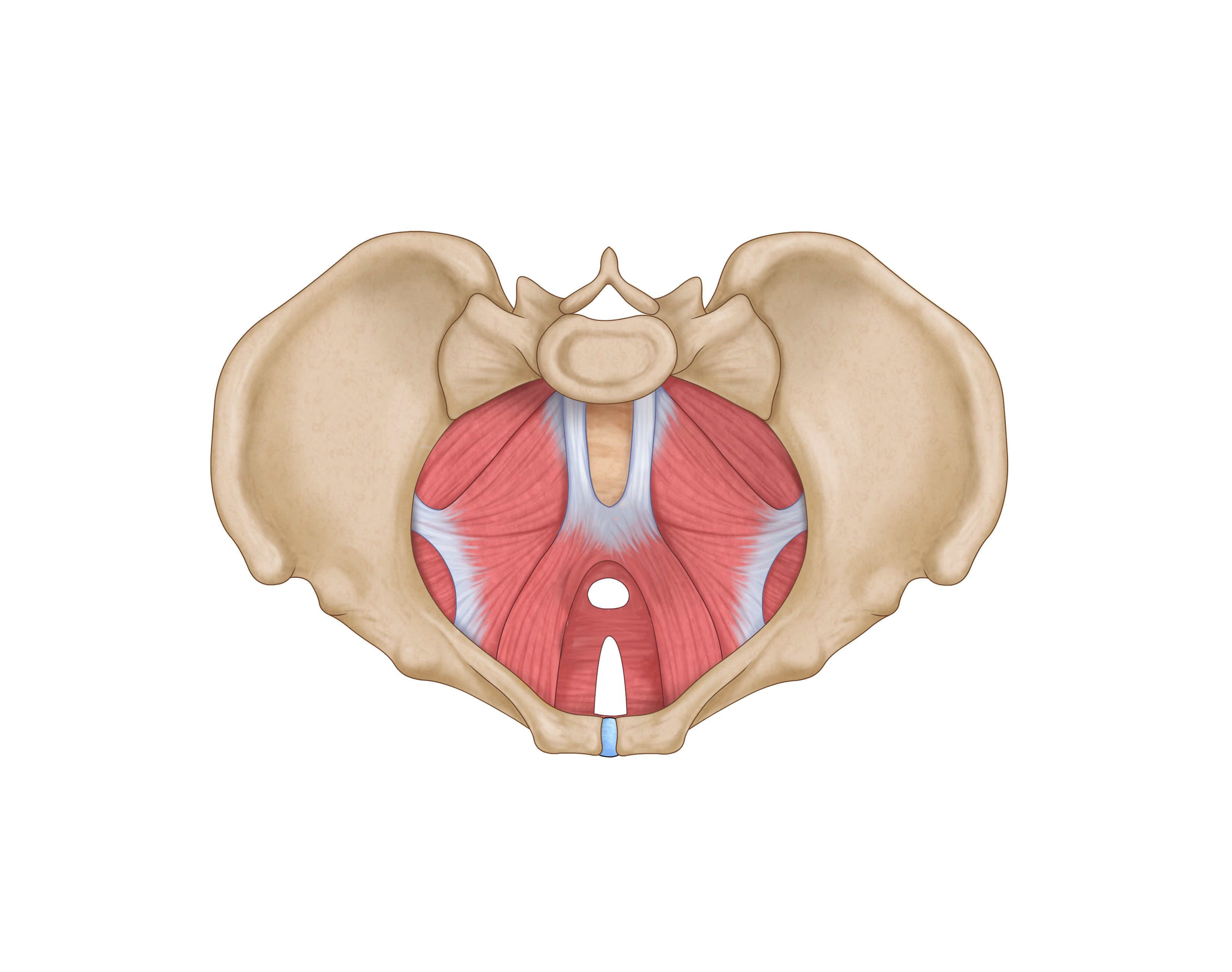Pelvic Health Physiotherapy: Everything You Need to Know

Pelvic Health Physiotherapy: Everything You Need to Know
Pelvic Health Primer
Did you know that one in three women experience pelvic floor problems at some point in their lives? Pelvic floor physiotherapy is a specialized form of treatment that can help with a wide variety of issues, such as incontinence, pelvic pain, and prolapse. In this blog post, we will discuss everything you need to know about pelvic floor physiotherapy. We will answer common questions, such as "what is the pelvic floor?" and "who can benefit from seeing a pelvic floor physiotherapist?" We will also provide tips on how to get help if you are experiencing pelvic floor dysfunction.
Table of Contents
What is the Pelvic Floor?
What is a pelvic health physiotherapist?
What is pelvic floor dysfunction?
How can physiotherapy help pelvic floor problems?
What does a pelvic health physiotherapy treatment look like?
How to get help?
FAQ
What is the Pelvic Floor?
The pelvic floor is a group of muscles, ligaments, and connective tissue that spans the bottom of the pelvis. These muscles support the pelvic organs, including the bladder, uterus, and rectum. Pelvic floor dysfunction occurs when there is weakness, damage, or too much tension to these muscles and tissues. This can lead to problems such as incontinence, pelvic pain, and prolapse (when organs bulge or sag into the vagina).

There are many myths and misconceptions about the pelvic floor, which can lead to confusion and anxiety for those who are struggling with pelvic health issues. Here are some common pelvic floor myths and the facts that dispel them:
- Myth 1: The pelvic floor is one muscle: In reality, the pelvic floor is made up of multiple muscles, ligaments, and connective tissues that work together to support the pelvic organs and control urinary and bowel function.
- Myth 2: Weak pelvic floors only affect women: All people have pelvic floors, and weakness or dysfunction in these muscles can lead to problems such as urinary incontinence or pelvic organ prolapse. Men may also experience erectile dysfunction as a result of pelvic floor dysfunction.
- Myth 3: Kegels are the only way to strengthen the pelvic floor: Kegel exercises are one way to strengthen the pelvic floor muscles, but they are not the only way. Other exercises, such as Pilates or yoga, can also help to build pelvic muscle strength. In addition, weightlifting and other forms of resistance training can help to tone the pelvic floor.
- Myth 4: Pelvic floor problems are always permanent: While some pelvic floor disorders can be chronic, many can be effectively treated with physical therapy without the need for surgery or medication.
What is a Pelvic Health Physiotherapist?
A pelvic health physiotherapist is a specialized physiotherapist that are trained in assessing and treating Pelvic Health conditions. They use a variety of techniques, such as manual therapy and targeted exercises, to help improve muscle function.
Pelvic floor physiotherapy is a type of physical therapy that helps to address problems with the pelvic floor muscles and tissues. Pelvic floor physiotherapists work with patients to assess and treat conditions that can cause pain or dysfunction in the pelvic region. Pelvic floor physiotherapy can help to improve bowel and bladder function, sexual function, and pelvic pain.

What is pelvic floor dysfunction?
Pelvic floor dysfunction is a condition that can affect any person. It is characterized by pelvic floor muscles that are weak, tight or have poor control. This can lead to problems with bowel and bladder control, sexual function, and pain in the pelvic region. Pelvic floor dysfunction can be caused by a variety of factors, including pregnancy, trauma, childbirth, aging, obesity, and a sedentary lifestyle. Pelvic floor physiotherapy is an effective treatment for pelvic floor dysfunction. A pelvic floor physiotherapist can help to strengthen the pelvic floor muscles and improve bowel and bladder control. They can also provide advice on how to improve sexual function and reduce pain in the pelvic region.
![AdobeStock_425196516-[Converted]](https://8637580.fs1.hubspotusercontent-na1.net/hub/8637580/hubfs/AdobeStock_425196516-%5BConverted%5D.png?width=570&name=AdobeStock_425196516-%5BConverted%5D.png)
How can physiotherapy help pelvic floor problems?
Physiotherapy can help to improve pelvic floor muscle function and reduce pelvic pain. Treatment may include exercises to improve muscle strength and control, as well as manual therapy to release tight muscles and trigger points. Pelvic physiotherapy can help to improve the quality of life for those suffering from pelvic floor problems.
Pelvic floor physiotherapy is an effective treatment for pelvic floor problems, providing both short- and long-term relief. A pelvic floor physiotherapist can provide techniques and exercises to improve pelvic floor muscle strength and function. Pelvic floor physiotherapy is often recommended as the first line of treatment for pelvic floor problems. It is safe, non-invasive, and has few side effects. In addition, pelvic floor physiotherapy can be used in conjunction with other treatments, such as medication or surgery. If you are suffering from pelvic floor problems, make an appointment with a pelvic floor physiotherapist today.

What does a pelvic health physiotherapy treatment look like?
A pelvic floor physiotherapy appointment typically lasts 45 minutes to an hour. During this time, the physiotherapist will take a detailed health history and ask questions about your symptoms. They will then perform a physical examination, which may include an internal pelvic exam. This will help them to assess the muscles, tissues, and nerves in the pelvic region. Once they have a thorough understanding of your condition, they will develop a treatment plan that may include exercises, manual therapy, and/or pelvic floor muscle training. Pelvic floor physiotherapy can help to relieve pain, improve bowel and bladder function, and promote healing after childbirth or surgery.
How to get help?
Pelvic health is an important issue for many people, and pelvic physiotherapy can be a great way to address problems. Our clinic offers pelvic physiotherapy assessments to help you identify the root cause of your pelvic pain or discomfort. During the assessment, our physiotherapist will take a detailed history and conduct a physical examination. Once we have a diagnosis, we will work with you to develop a treatment plan that is tailored to your individual needs. Whether you are suffering from pelvic pain, incontinence, or another pelvic health problem, we can help. Call our clinic today to schedule your pelvic physiotherapy assessment.

FAQ
What is the Pelvic Floor?
The pelvic floor is a group of muscles, ligaments, and connective tissue that spans the bottom of the pelvis. These muscles support the pelvic organs, including the bladder, uterus, and rectum.
What is pelvic floor dysfunction?
Pelvic floor dysfunction occurs when there is weakness, damage, or too much tension to these muscles and tissues.
How can physiotherapy help pelvic floor problems?
Physiotherapy can help to improve pelvic floor muscle function and reduce pelvic pain. Treatment may include exercises to improve muscle strength and control, as well as manual therapy to release tight muscles and trigger points.